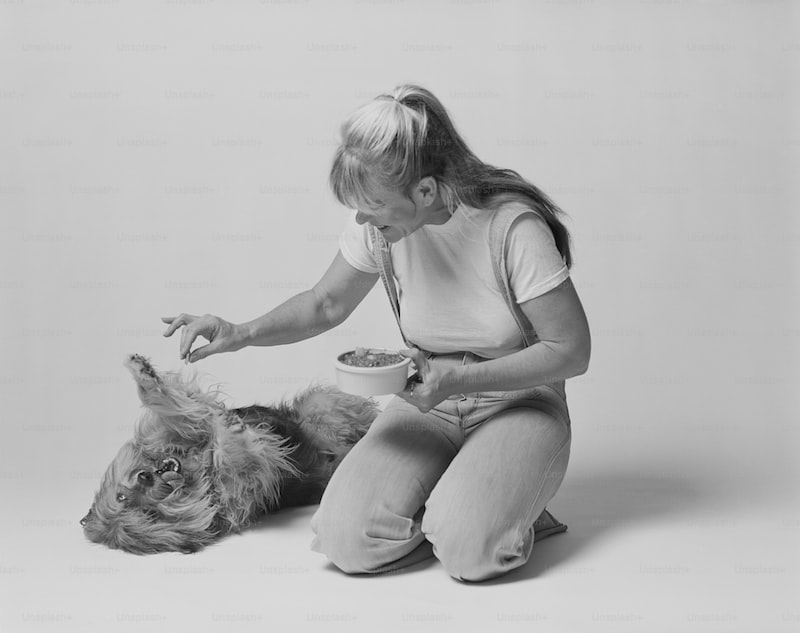Table of Contents
When it comes to optimal canine nutrition, selecting the best dog food for your furry friend is crucial. Your pet’s health and well-being depend on a balanced diet that provides all the essential nutrients they need. With so many options available in the market, it can be overwhelming to choose the right one. But fear not! In this article, we’ll guide you through the process of finding the perfect dog food for your beloved companion.
One important factor to consider when selecting dog food is the age and size of your pet. Puppies have different nutritional needs than adult dogs, and small breeds have different requirements compared to large breeds. Look for dog food specifically formulated for your pet’s life stage and size to ensure they get the right amount of nutrients for their development.
Another crucial aspect is to check the ingredients list. Opt for dog food that lists high-quality protein sources such as chicken, beef, or fish as the main ingredient. Avoid products containing fillers like corn, wheat, or soy, as these offer little nutritional value and may cause allergies or digestive issues in some dogs.
Consider any specific dietary needs your dog may have. For example, if your pet has food sensitivities or allergies, look for hypoallergenic or limited ingredient dog food. Likewise, if your dog has certain health conditions, consult with your veterinarian to find a specialized diet that suits their needs.
Don’t forget to assess the overall quality of the dog food brand. Look for reputable companies with a track record of producing high-quality dog food. Check for certifications like AAFCO (Association of American Feed Control Officials) to ensure the food meets or exceeds the minimum nutritional standards.
It’s also worth considering whether dry kibble, wet canned food, or a combination of both is suitable for your dog. Dry food is convenient and helps promote dental health, while wet food can be enticing for picky eaters and provides additional hydration.
Remember, every dog is unique, and what works for one may not work for another. Pay attention to your pet’s individual preferences and monitor their overall health, coat condition, and energy levels after transitioning to a new food. If you notice any adverse reactions or concerns, consult with your veterinarian for further guidance.
Now armed with these tips, you can confidently navigate the vast array of dog food options and select the best nutrition for your four-legged companion. Give them the
gift of optimal canine nutrition, and watch them thrive and wag their tail in delight!Unleashing the Secrets of Optimal Canine Nutrition: A Guide to Choosing the Perfect Dog Food
Are you a proud dog owner searching for the key to your furry friend’s vibrant health and happiness? Look no further! The secret lies in optimal canine nutrition, and we’re here to guide you on the path to choosing the perfect dog food. Just like humans, dogs require a balanced diet that meets their specific nutritional needs. After all, a well-fed dog is a healthy and energetic companion.
So, what should you consider when selecting the ideal dog food for your beloved pet? Let’s dive into the details.
First and foremost, it’s vital to understand that dogs are omnivores. While they have carnivorous tendencies, a complete and balanced diet typically consists of proteins, carbohydrates, fats, vitamins, and minerals. Seeking out high-quality dog food brands that prioritize these essential nutrients is crucial.
When examining the ingredient list, keep an eye out for premium protein sources such as chicken, beef, or fish. These protein powerhouses are fundamental for maintaining strong muscles and supporting overall growth and development. Additionally, look for healthy carbohydrates like brown rice or sweet potatoes, which provide sustained energy throughout the day.
Another important aspect to consider is the absence of artificial additives and fillers. Opt for dog food that is free from artificial flavors, colors, and preservatives. By doing so, you can ensure your furry friend is receiving a wholesome, natural diet without unnecessary additives that may cause allergies or digestive issues.
It’s also worth noting that different breeds and life stages have diverse nutritional requirements. Puppies, for instance, require higher levels of protein and fat to support their rapid growth. On the other paw, senior dogs may benefit from specialized formulas that address age-related concerns such as joint health or weight management. Always consult with your veterinarian to determine the specific nutritional needs of your furry companion.
uncovering the secrets of optimal canine nutrition starts with choosing the perfect dog food. By prioritizing high-quality ingredients, avoiding artificial additives, and considering your dog’s specific needs, you can provide them with a diet that promotes their overall well-being. Remember, a healthy dog is a happy dog, and proper nutrition is the key to unlocking their full potential!
From Kibble to Raw Diets: Decoding the Best Nutritional Options for Your Furry Friend
Are you tired of wondering what’s the best nutrition for your furry friend? Look no further! In this article, we’ll decode the options from kibble to raw diets and help you make an informed decision for your beloved pet.
Feeding our pets a balanced and nutritious diet is crucial for their overall well-being. While traditional kibble has been the go-to option for many years, raw diets are gaining popularity among pet owners seeking a more natural and ancestral approach. So, let’s dive into the details and explore these two nutritional options.
Kibble, also known as dry food, is a convenient and widely available choice. It consists of processed ingredients, including meat by-products, grains, and additives. Manufacturers often fortify it with essential vitamins and minerals to meet the nutritional requirements of pets. Kibble offers convenience in terms of storage, portion control, and affordability. However, some argue that the high-temperature processing involved in making kibble may deplete certain nutrients and enzymes, potentially affecting its overall quality.
On the other hand, raw diets prioritize fresh, unprocessed ingredients, mimicking what pets would have consumed in the wild. Raw diets typically consist of raw meat, bones, organs, and vegetables. Advocates claim that feeding pets raw food can improve their digestion, coat quality, energy levels, and overall health. Some even believe that it can prevent certain health issues such as allergies and obesity. However, it’s important to note that formulating a balanced raw diet requires careful consideration of a pet’s specific needs and consulting with a veterinarian or animal nutritionist.
Choosing between kibble and raw diets ultimately depends on your pet’s individual needs, preferences, and any underlying health conditions. It’s essential to consider factors such as age, breed, activity level, and existing dietary sensitivities. Additionally, consulting with a trusted veterinarian will provide valuable insights tailored to your pet’s unique requirements.

both kibble and raw diets have their merits, and the best choice depends on your furry friend’s specific needs. Whether you opt for the convenience of kibble or the natural approach of a raw diet, ensuring a balanced and nutritionally complete meal is key. Remember, the health and happiness of your pet rely on the quality of their diet, so choose wisely and enjoy watching your furry friend thrive!
Tailoring the Bowl: How to Navigate the Maze of Dog Food Choices and Optimize Your Pet’s Health
Are you tired of feeling overwhelmed by the countless options available when it comes to choosing the right food for your furry friend? Well, fret no more! In this article, we’ll guide you through the maze of dog food choices and help you optimize your pet’s health. So, grab a seat, and let’s tailor the bowl!
Choosing the perfect dog food can be a daunting task, considering the wide array of options available in the market. But fear not, as we are here to simplify the process for you. The key to finding the right food lies in understanding your dog’s unique needs. Just like humans, dogs have different dietary requirements based on their age, breed, size, activity level, and any specific health concerns they may have.
Start by consulting your veterinarian to determine your dog’s nutritional needs. They can provide valuable insights into any dietary restrictions or allergies your dog may have. Armed with this information, you can narrow down your options effectively.
When perusing the aisles of pet stores or browsing online, keep an eye out for labels that indicate the food is nutritionally balanced. Look for key ingredients like lean proteins, whole grains, and healthy fats. Avoid foods that contain fillers, artificial additives, or excessive amounts of preservatives.
Another factor to consider is whether to opt for commercial dog food or prepare homemade meals. While homemade meals can be tailored to your dog’s specific needs, it is essential to ensure they receive all the necessary nutrients. If you choose to go this route, consult your vet or a canine nutritionist to create a well-balanced meal plan.
Now, let’s talk about portion control. It’s crucial to feed your dog the right amount of food to maintain a healthy weight. Overfeeding can lead to obesity, while underfeeding can result in malnutrition. Follow the feeding guidelines provided by the manufacturer, but remember that these are just general recommendations. Adjust the portions based on your dog’s individual needs and monitor their weight regularly.
Remember, tailoring the bowl is not a one-time task. As your dog ages or experiences changes in health or activity level, their nutritional requirements may change. Stay in touch with your veterinarian and adapt their diet accordingly.
By tailoring the bowl to meet your dog’s specific needs, you can optimize their health and well-being. So, take charge, navigate the maze of dog food choices, and give your furry companion the best nutrition possible. After all, a healthy dog is a happy dog!
Breaking Down the Ingredients: Understanding What Makes a Dog Food Truly Nutritious
When it comes to our furry companions, providing them with a nutritious diet is essential for their overall health and well-being. But what exactly makes a dog food truly nutritious? Let’s delve into the ingredients that should be on your radar to ensure your pup gets the best nourishment possible.
First and foremost, a high-quality source of protein is crucial in any dog food. Look for ingredients like chicken, beef, fish, or lamb as the primary protein source. Protein is essential for building and repairing tissues, maintaining a healthy coat, and supporting proper muscle development in dogs.

Next, let’s talk about carbohydrates. While dogs are primarily carnivorous, they still benefit from a moderate amount of carbohydrates in their diet. Whole grains like brown rice, oats, and quinoa are excellent choices. Carbohydrates provide energy and help with digestion.

Fats also play a significant role in a dog’s nutrition. Healthy fats, such as those found in fish oil or chicken fat, are a great source of omega-3 and omega-6 fatty acids. These fats support a healthy immune system, promote a shiny coat, and aid in brain development.
Vitamins and minerals are vital for a dog’s overall health. Look for dog foods enriched with antioxidants, such as vitamins C and E, which help boost the immune system and fight off free radicals. Minerals like calcium, phosphorus, and zinc are essential for strong bones, teeth, and proper cell function.

Now, let’s not forget about fiber. Fiber aids in digestion and helps regulate bowel movements. Ingredients like sweet potatoes, peas, and pumpkin are excellent sources of dietary fiber.
Lastly, be mindful of any potential allergens or sensitivities your dog may have. Some common allergens include wheat, soy, and corn. If your dog has specific dietary restrictions, opt for grain-free or limited ingredient formulas to avoid triggering any adverse reactions.
Remember, each dog is unique, and their nutritional needs may vary. It’s always a good idea to consult with your veterinarian to determine the best diet for your furry friend based on their age, breed, size, and any specific health conditions they may have.
providing your dog with a truly nutritious diet involves carefully selecting ingredients. Look for high-quality proteins, wholesome carbohydrates, healthy fats, essential vitamins and minerals, fiber, and consider any dietary restrictions your pup may have. By understanding the importance of these ingredients, you can ensure your dog receives the nourishment they need for a happy and healthy life.





